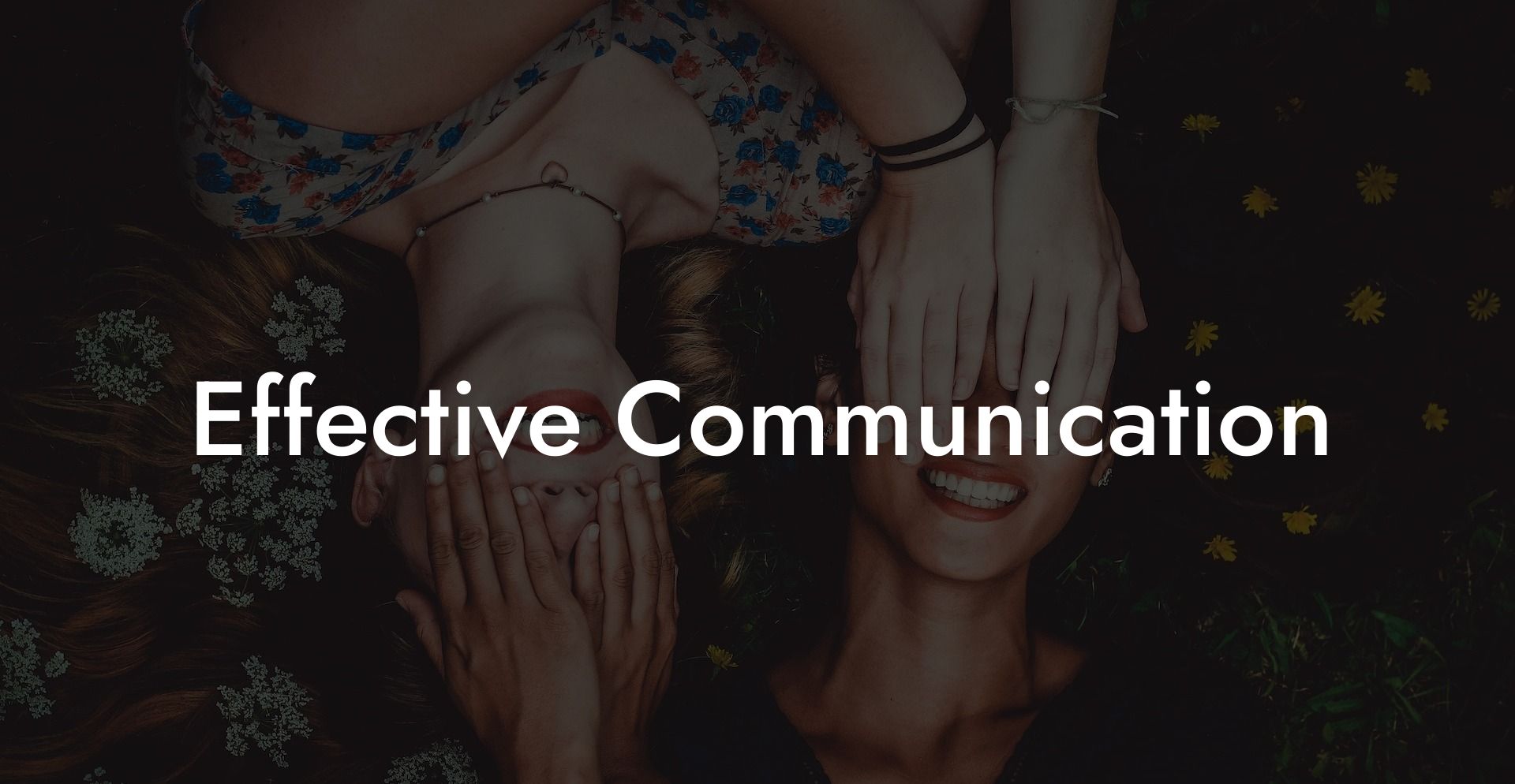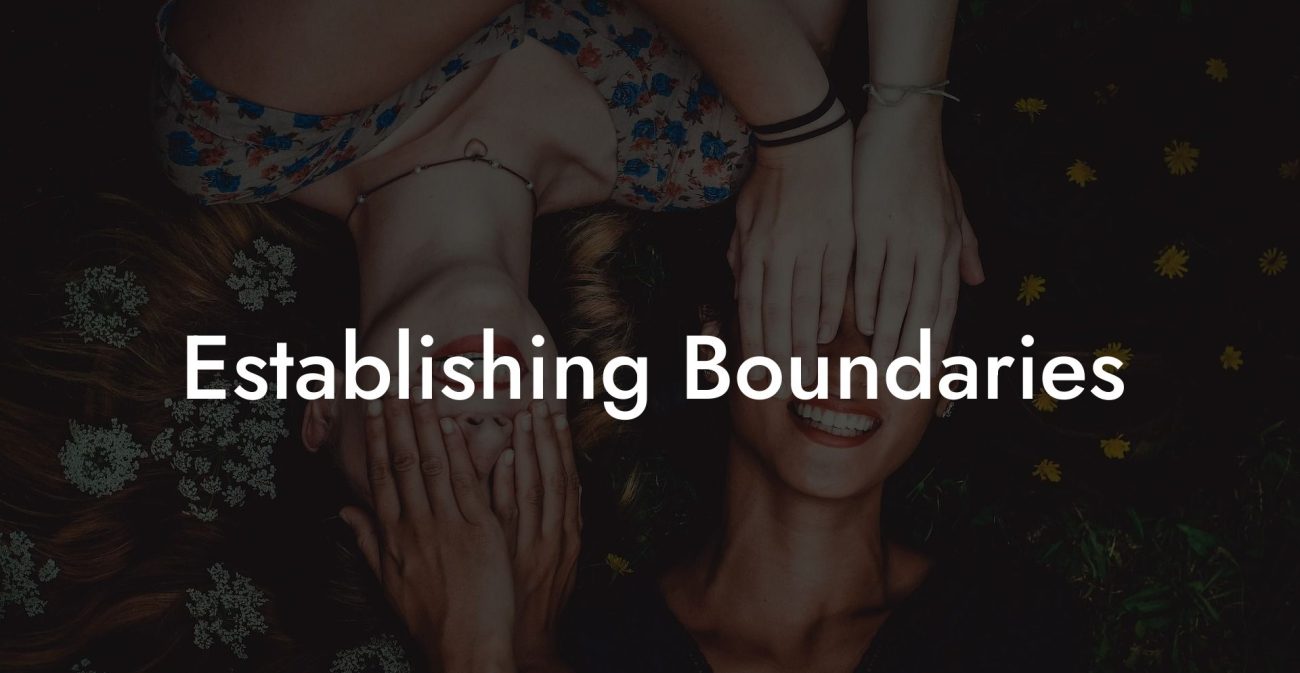Effective Communication

Imagine a stage where every word, every pause, and every nuance of expression is a brushstroke on the canvas of connection, a place where conversations aren’t just exchanges, but transformative rituals that build trust, resolve conflicts, and deepen intimacy. Welcome to the world of effective communication in relationships, whether you’re exploring the timeless depth of traditional monogamy or the expansive possibilities of ethical non-monogamy. In this guide, we dive deep into how clear, honest dialogue serves as the backbone of every loving relationship, illuminating strategies that work across all relationship models. Get ready to unlock the secrets to building bridges with your words and creating a love story that speaks volumes.
Quick Links to Useful Sections
- Understanding Effective Communication in Relationships
- What Is Effective Communication?
- Communication Dynamics in Traditional Monogamy
- The Simplicity of a Two-Person Focus
- Common Practices in Monogamous Communication
- Communication Dynamics in Ethical Non-Monogamy
- The Complexity and Beauty of Multiple Voices
- Challenges in Non-Monogamous Communication
- Techniques for Effective Communication Across Relationship Models
- Using "I" Statements and Active Listening
- Establishing Regular Check-Ins
- Creating Safe Spaces for Dialogue
- Leveraging Digital Tools for Communication
- Conflict Resolution Strategies
- Real-Life Examples and Success Stories
- Case Study: Monogamous Harmony
- Case Study: Polyamorous Transparency
- Expert Insights on Communication in Relationship Dynamics
- FAQ: Your Effective Communication Questions Answered
Understanding Effective Communication in Relationships
What Is Effective Communication?
Effective communication is the art of expressing your thoughts, feelings, and needs in a way that is both honest and empathetic. It involves active listening, clarity, and mutual understanding, a process that not only conveys information but also builds trust and intimacy between partners. Whether in a monogamous or non-monogamous relationship, effective communication is essential to resolving conflicts, establishing boundaries, and fostering emotional connection.
At its core, effective communication is about creating a safe space where everyone can share their inner worlds without fear of judgment. It’s about using “I” statements, practicing active listening, and regularly checking in with each other to ensure that all voices are heard.
Communication Dynamics in Traditional Monogamy
The Simplicity of a Two-Person Focus
In traditional monogamy, communication is typically streamlined, as it involves just two people. This focused dynamic can lead to:
- Deep Emotional Intimacy: With one partner, every conversation can be an opportunity to explore and understand the other’s emotional landscape in great depth.
- Clear and Consistent Dialogue: Fewer voices mean fewer chances for miscommunication, allowing couples to hone a precise and intimate language over time.
- Simplified Conflict Resolution: With only two perspectives to reconcile, resolving disagreements can be more straightforward, provided both partners are committed to honest dialogue.
Common Practices in Monogamous Communication
Many monogamous couples adopt rituals that reinforce connection:
- Daily Check-Ins: A brief conversation at the start or end of each day to share feelings and updates.
- Weekly Date Nights: Regularly scheduled evenings dedicated solely to deep conversation and shared experiences.
- Conflict Resolution Sessions: Structured conversations designed to address disagreements using techniques like “I” statements and reflective listening.
Communication Dynamics in Ethical Non-Monogamy
The Complexity and Beauty of Multiple Voices
Ethical non-monogamy introduces an added layer of complexity to communication because it involves more than two people. Whether you’re navigating polyamory, open relationships, or relationship anarchy, the challenge is to ensure that each partner feels heard and valued. Here, communication must be both broad and nuanced:
- Multi-Level Check-Ins: Regular meetings may occur both in group settings and one-on-one to address different levels of connection.
- Transparent Information Sharing: Honesty about one’s interactions with other partners is essential, though it may be tailored to the comfort levels of each individual.
- Flexible Communication Protocols: Given the diversity of relationships, setting clear guidelines for when and how to communicate, such as digital group chats or scheduled individual check-ins, can help maintain clarity and trust.
Challenges in Non-Monogamous Communication
With more voices at the table, ethical non-monogamy can present challenges such as:
- Jealousy and Insecurity: These feelings can emerge when partners compare interactions, making open dialogue essential to address concerns before they escalate.
- Scheduling Conflicts: Coordinating time for one-on-one and group conversations can be tricky, requiring effective use of digital tools.
- Complex Boundary Negotiation: Clear, ongoing communication is necessary to establish and renegotiate boundaries as relationships evolve.
Techniques for Effective Communication Across Relationship Models
Using "I" Statements and Active Listening
One of the most powerful techniques in any relationship is using “I” statements. This means expressing your feelings by focusing on your own experience rather than assigning blame. For example, say, “I feel neglected when we don’t have time together,” instead of “You never spend time with me.” Active listening complements this by ensuring that the speaker feels heard. Reflect back what you hear and ask clarifying questions to deepen understanding.
Establishing Regular Check-Ins
Whether you’re in a monogamous or non-monogamous relationship, regular check-ins are essential. Set aside dedicated time, daily, weekly, or monthly, for meaningful conversation. In monogamous relationships, this might be a simple daily conversation, while in ethical non-monogamy, you might have both group and individual check-ins.
Consistency in these routines builds trust and ensures that everyone’s emotional needs are met.
Creating Safe Spaces for Dialogue
A safe space is one where every participant feels comfortable sharing their true feelings without fear of judgment. Establish ground rules for conversations, such as no interrupting, no name-calling, and maintaining confidentiality when needed. These rules foster an environment of mutual respect and vulnerability.
Leveraging Digital Tools for Communication
In today’s interconnected world, digital tools can significantly enhance communication. Shared calendars, group messaging apps, and digital journals can help coordinate schedules and document important agreements. These tools are especially valuable in non-monogamous settings where keeping track of multiple connections is essential.
Consider using platforms like Google Calendar for scheduling, Slack or WhatsApp for group communication, and Notion or Trello for tracking relationship goals and boundaries.
Conflict Resolution Strategies
Conflict is inevitable, but when handled constructively, it can lead to deeper understanding and growth. Techniques include:
- Mediation: Sometimes involving a neutral third party, such as a therapist or relationship coach, can help mediate difficult conversations.
- Structured Dialogue: Use frameworks like the Gottman Method to guide conversations and ensure both partners have equal opportunities to speak and listen.
- Reflection Time: When emotions run high, agree to take a break and revisit the conversation later with a calmer mindset.
Real-Life Examples and Success Stories
Case Study: Monogamous Harmony
Consider the story of Emma and Liam, a couple who have been together for over a decade. They credit their long-lasting connection to daily check-ins and a weekly “date night” where they discuss their goals, challenges, and dreams. By consistently using “I” statements and actively listening to one another, they have built a foundation of trust and deep emotional intimacy. Their approach to communication is simple yet profoundly effective, allowing them to navigate life’s ups and downs with unity.
Case Study: Polyamorous Transparency
In a bustling polyamorous network, Jordan, Casey, and Alex have created a triad that thrives on transparent communication. They hold monthly group meetings where each person shares their experiences, challenges, and future aspirations. In addition to group check-ins, each dyadic pair also meets individually to discuss personal matters. This layered communication strategy has minimized conflicts and built a resilient support system, demonstrating that even the most complex relationships can flourish with clear and consistent dialogue.
Expert Insights on Communication in Relationship Dynamics
Relationship experts agree that effective communication is the cornerstone of any successful partnership. Dr. Elena Rivera, a therapist specializing in relationship dynamics, explains, “Whether you’re in a monogamous or non-monogamous relationship, communication is the glue that holds everything together. It’s about creating a space where each person feels safe to express their true self.”
Similarly, relationship coach Marcus Lee adds, “The key to effective communication is consistency. Regular check-ins and a commitment to using compassionate language can transform how partners resolve conflicts and build intimacy.”
FAQ: Your Effective Communication Questions Answered
1. What is effective communication in relationships?
Effective communication involves expressing your thoughts, feelings, and needs clearly and empathetically while actively listening to your partner(s). It’s the foundation of trust and intimacy in any relationship.
2. How can I improve my communication skills?
Practice using “I” statements, engage in active listening, schedule regular check-ins, and consider seeking guidance from a therapist or relationship coach to refine your skills.
3. What digital tools can help enhance communication?
Shared calendars (like Google Calendar), group messaging apps (such as Slack or WhatsApp), and digital journals (like Notion or Trello) can help coordinate schedules, track commitments, and document important conversations.
4. How do communication needs differ in monogamous vs. non-monogamous relationships?
In monogamous relationships, communication tends to be more focused between two people, whereas non-monogamous relationships require multi-layered communication strategies, both group and individual, to ensure all partners feel heard and valued.
5. How can I create a safe space for dialogue?
Establish clear ground rules for discussions, such as no interruptions or name-calling, and encourage honesty and empathy. Regularly revisiting these guidelines helps maintain a respectful and supportive environment.
6. What are some conflict resolution techniques?
Techniques include using “I” statements, taking breaks when emotions run high, structured dialogue methods, and, if needed, mediation with a neutral third party.
7. How important are regular check-ins?
Regular check-ins are crucial for maintaining open lines of communication, addressing issues promptly, and ensuring that all partners’ needs are met.
8. What should I do if a conversation becomes too heated?
If emotions escalate, take a break and agree to revisit the discussion once both parties have had time to cool down. This helps prevent conflicts from spiraling out of control.
9. How do I balance individual and group communication in non-monogamous settings?
Establish a schedule that includes both group meetings and one-on-one conversations. This layered approach ensures that personal issues are addressed while maintaining overall transparency within the group.
10. Where can I find more resources on effective communication?
Explore books like "Nonviolent Communication" by Marshall Rosenberg, podcasts such as “Where Should We Begin?” by Esther Perel, and online courses or workshops focused on communication skills.
Resources and Community Support: Your Next Steps in Mastering Effective Communication
- Books: Consider reading "Nonviolent Communication" by Marshall Rosenberg for essential techniques on compassionate dialogue.
- Podcasts: Listen to "Where Should We Begin?" by Esther Perel and other relationship-focused shows for real-life stories and expert advice.
- Online Courses: Enroll in workshops or webinars on effective communication and conflict resolution to enhance your skills.
- Digital Tools: Use shared calendars and messaging apps to keep communication organized and consistent.
- Therapy and Counseling: Seek professional guidance from relationship therapists or coaches who specialize in communication strategies.
- Community Groups: Join online forums and local meet-ups to share experiences and learn from others in the polyamorous and monogamous communities.
Whether you’re nurturing a single, deep connection or juggling multiple relationships, effective communication is the bridge that connects hearts and minds. Embrace these strategies, draw on the wealth of resources available, and let every conversation become an opportunity to deepen your bond and enrich your life.
Lost & confused by all of the terms, types and seemingly made up 3 letter acronyms?? We've got you. Check out our Ethnical Non-Monogamy Dictionary >>
Useful Interruption: Not sure which relationship vibe fits you best? Take our Relationship Test, it’ll give you the real insight into your natural relationship style. Then, dive into our binge-worthy guides (from the tried-and-true to the “wait, that’s a thing?”) and find the perfect relationship type for your life:
- Monogamy
- Open Relationships
- Ethical Non-Monogamy
- Solo Polyamory
- Non-Hierarchical Polyamory
- Hierarchical Polyamory
- Relationship Anarchy
- Swinging
Now back to the main article but yeah take the test...



